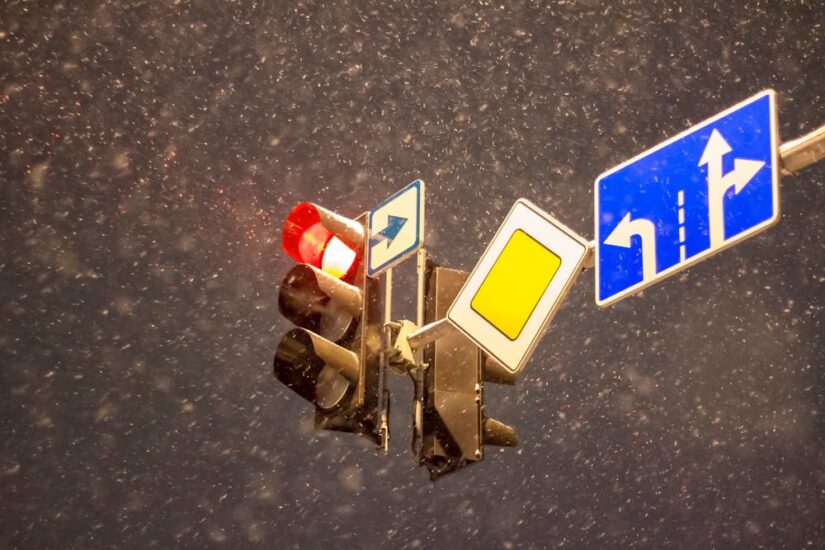Driving tests in Ireland often challenge new drivers. Many eager learners confidently approach the test, yet common mistakes still lead to failure.
Examiners watch for correct mirror checks, proper signaling, controlled vehicle handling, and full stops at intersections. Detailed guidance in this blog will focus on habits worth refining and skills that earn a passing score.
Practical strategies here help prepare learners for test day with calm minds and consistent techniques. Passing rates can improve when candidates know what pitfalls to avoid and focus on skillful driving rather than guesswork.
Many first-time applicants struggle with proper lane control and speed management, vital to gaining examiner trust. Others neglect full observation before maneuvers, risking immediate disqualification.
7 Mistakes Leading To Driving Test Failure
Many learners approach the test with preparation yet still lose marks on simple errors. Small oversights affect safety and expose gaps in training. Identifying common mistakes helps focus on more vigorous driving habits.
1. Forgetting To Check Mirrors And Blind Spots
Learners fail the test by ignoring mirrors and blind spots. Paying attention matters, as even a tiny oversight can cause accidents.
Drivers who skip careful glances risk surprising cyclists or pedestrians. Constant awareness prevents sudden swerves and keeps everyone safe. Mastering mirror checks involves memorizing their positions and scanning them regularly.
Blind spots hide hazards that appear at dangerous times. By shifting your head slightly and using proper techniques, spotting these dangers becomes second nature. Making mirror and blind spot checks automatic increases examiner confidence in driver ability.
2. Ignoring Proper Use Of Turn Signals
Many learners overlook proper turn signals. Signals let other road users know their intentions and prevent collisions. Drivers who fail here show examiners’ carelessness, risking immediate failure. Consistent and timely signaling encourages smoother traffic flow, building examiner trust. Using signals before changing lanes or making turns becomes a learned habit.
Hesitation or guessing annoys other drivers and raises stress levels. Practicing the correct timing and position of signals helps learners pass their tests. Paying attention here offers a smoother exam experience.
3. Rolling Through Stop Signs
Many learners treat stop signs as minor suggestions. Doing so shows examiners a lack of respect for road rules. Stopping fully at each stop sign prevents sudden encounters with passing cars or pedestrians. Observers notice drivers who roll through, damaging trust and risking immediate failure. Count three seconds before releasing the brake and proceeding forward.
Road safety officials enforce these requirements for a reason, and examiners pay attention. Properly stopping reflects discipline and awareness. Frequent practice at known test routes builds confidence, making it easier to apply correct procedures under pressure.
4. Maintaining Poor Lane Discipline
Struggling to maintain a steady lane position shows a lack of control and foresight. Shifting without reason creates doubt in the examiner’s mind. Irish roads demand drivers who stick to their lane unless a clear need arises. Jerky lane changes or drifting off-center suggest poor judgment and careless habits.
Proper lane discipline comes from steady steering, consistent speed, and scanning ahead for potential hazards. Practicing on busy streets helps learners improve precision and gain confidence. Proving mastery here reassures the examiner that safe, calm driving will follow.
5. Driving At Improper Speeds
Examiners notice poor speed choices that cause traffic flow problems and missed observations. Driving above the limit signals a lack of control, endangering others and risking failure. Maintaining a slow pace frustrates other road users and suggests nervousness or hesitation.
Aim for steady acceleration and braking, adapting to changing conditions without delays. Practicing with experienced drivers helps shape reliable speed judgment. Demonstrating calm awareness improves the examiner’s trust.
6. Struggling With Steering Control
Jerky wheel movements signal nervousness and hesitation, causing examiners to doubt skill. Consistent, controlled input shows that driver respects road conditions and traffic around them. Sudden swerves or drifting out of lanes reflect a lack of preparation and focus, raising safety concerns.
Practicing slight wheel corrections on quiet roads helps learners gain steady control. Adjusting grip, watching road edges, and looking ahead make handling feel natural. Building comfort and consistency with steering reduces unnecessary tension and earns examiner approval
7. Letting Nerves Affect Judgment
Racing thoughts often sabotage a learner’s performance behind the wheel. Steady breathing reduces mental clutter and keeps attention sharp. Arriving early and walking for a moment eases tension. Whispering positive reminders before starting helps maintain control. Running through test routes with a friend builds familiarity, leaving less room for panic.
Listening to calm music before entering the car steadies nerves and encourages thoughtful responses to changing conditions. Visualizing successful maneuvers, checking mirrors, and managing speed instill confidence and curb anxiety. Proving calm decision-making impresses the examiner.
Baby Steps For Passing Your Driving Test
We take all the risk by offering a solid “Pass With Confidence” guarantee. Picture yourself feeling calm, confident, and in control on test day.
Download our free Andriod or iOS TestRoutes.ie app. Fill in simple details and get instant access to route details that matter. Without proper support, staying prepared feels harder. Remember, you gain a free app loaded with actual Irish test route information.


